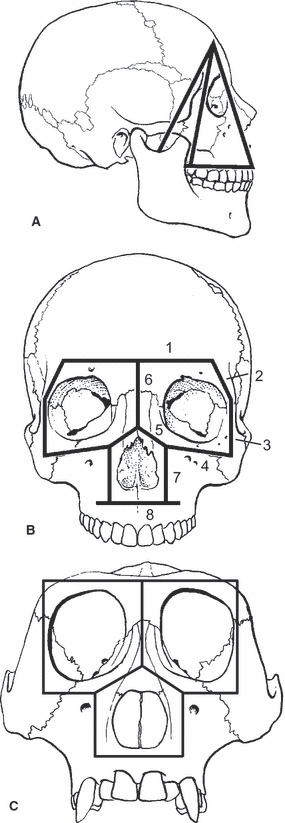Fig. 1.

(A) Facial pillars modeled by Roberts & Tattersall (1974) as transmitting compressive forces from the toothrow to the braincase. (B) Endo's fundamental framework of the human face, consisting of (1) transversely oriented frontal member, (2) oblique superior zygomaticofrontal member, (3) vertically oriented inferior zygomaticofrontal member, (4) oblique maxillozygomatic member, (5) lower nasal member, (6) midline upper nasal member, (7) maxillary member, and (8) transversely oriented alveolar member. (C) Endo's fundamental framework of the gorilla face. This framework differs from the human frame in having a single zygomaticofrontal member, a horizontally oriented maxillozygomatic member, and an alveolar member that does not extend lateral to the maxillary member. The methods for deriving these models are not presented by Endo, so the reasons for these differences are not discussed.
